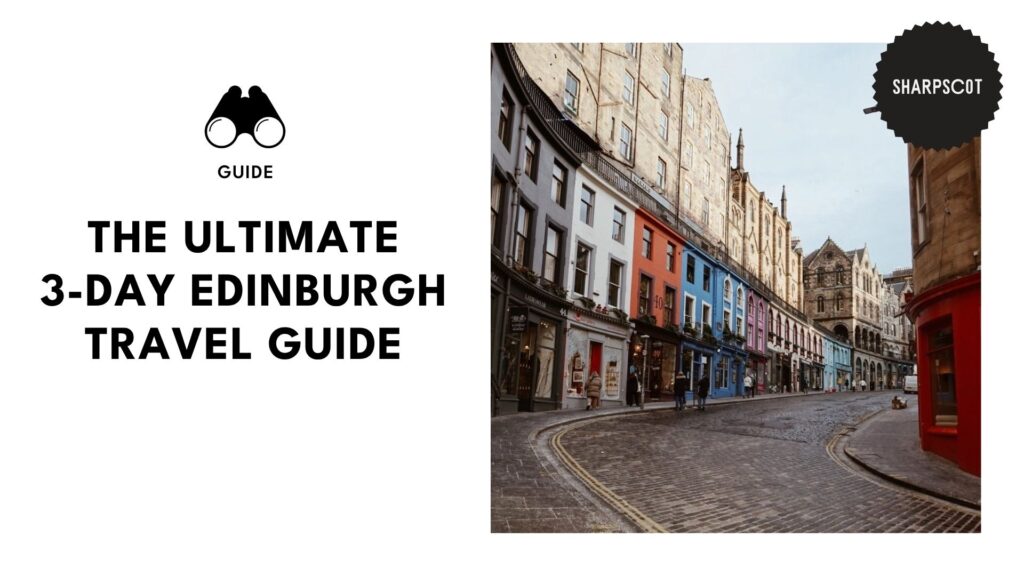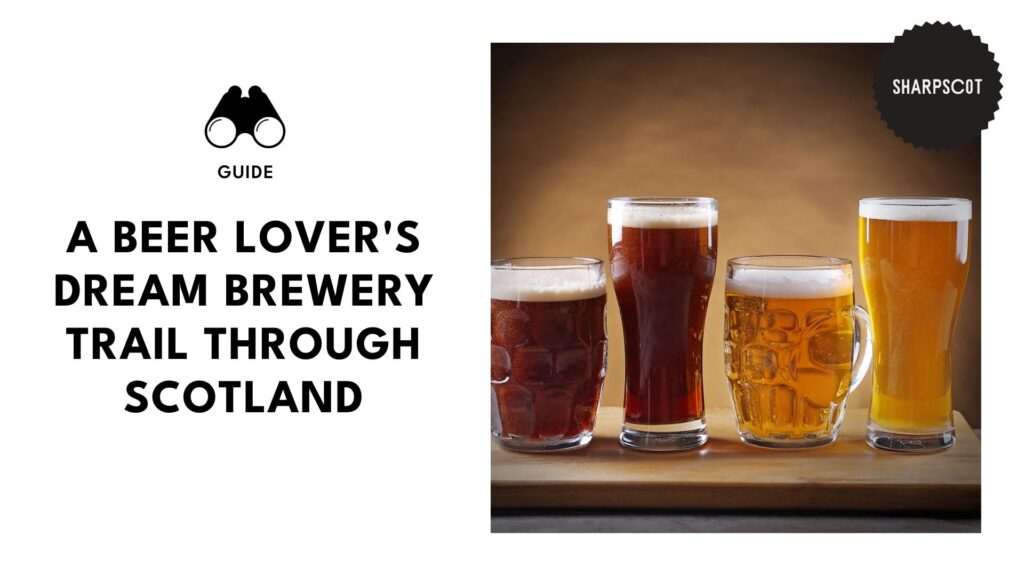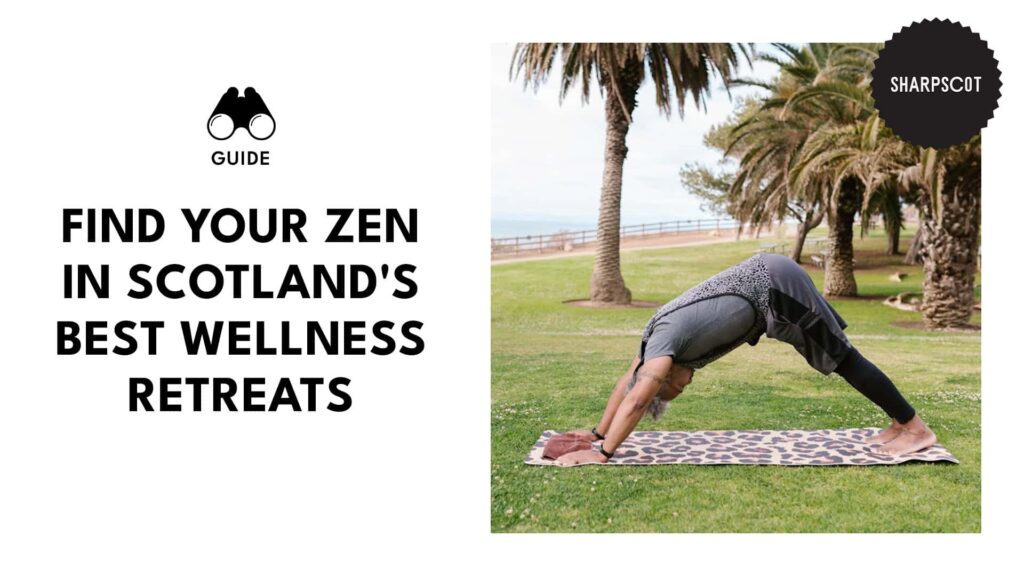Categories > Guides and Tips

9 Epic Watersports in Scotland You Need to Try (and Where You Can Try Them!)
- Kayaking and Canoeing
- Loch Ness
- Loch Lomond
- River Spey
- Paddleboarding
- St. Andrews Bay
- Oban Bay
- Loch Tay
- Windsurfing
- Loch Shiel
- Isle of Tiree
- Aberdour Beach
- Kite Surfing
- Fraserburgh Beach
- Newburgh Beach
- Balmedie Beach
- Wakeboarding
- Loch Awe
- Loch Morlich
- Loch Earn
- Coasteering
- The Isle of Skye
- Pembrokeshire Coast
- Torridon
- Scuba Diving
- Scapa Flow
- Sound of Mull
- Isle of Skye
- Fishing and Angling
- River Tay
- Loch Fyne
- Loch Awe
- Yachting and Sailing
- Orkney
- Firth of Clyde
- Largs
If you’re up for adventure like I am, then you’ll love watersports. Whether it’s scenic paddleboarding or adrenaline-filled sailing, you bet I’ve already slapped on my sun cream and got my wetsuit pulled tight, ready to dive right in.
Luckily, Scotland’s packed with brilliant spots for some cracking watersports—no matter your age or experience. Heck, my pop has been taking my brothers and me go kayaking since we learned to walk, so best believe I know all the best spots when it comes to making a splash.
So what are you waiting for? Get your sun cream on and suit up as we get ready to dive into Scotland’s best watersports that you can’t miss!
Kayaking and Canoeing
Loch Ness
Media Credit: tessa_mvn
Whether you’re into legends or not, there’s no denying that the Loch Ness is one of the most famous bodies of water in the world. Having captured the imaginations of many generations, there’s definitely something surreal about gliding over the waters.
Surrounded by the dramatic Highland landscapes, it’s a breeze paddling through the over 22-mile-long loch. Plus, it’s doable for all skill levels, whether you simply want a gentle paddle or a full-day adventure.
Pro Tip: While you’re there, be sure to check out the Urquhart Castle which is right on the loch’s edge. A sight to see on land, it’s even more magical from the water.
Loch Lomond
Britain’s largest lake, Loch Lomond, is one of the best locations for kayaking and canoeing because of its diverse scenery. There are narrow straits, sheltered bays, and open water, making it suitable for all skill levels.
There are also loads of operators that provide equipment rental, allowing you to explore independently at your own pace. But if you’re looking for a more structured experience, there are also guided tours that will take you around.
Pro Tip: Check weather conditions regularly to be best prepared for the elements.
River Spey
Media credit: hammysquire
If you’re looking to pick up the pace, the River Spey is a must. Known for its constantly fast flow with some sections even reaching Grade 3 rapids, it’s easily one of the most thrilling spots on this list.
As you get closer to the North Sea, you’ll start to feel the current gaining speed, promising an unforgettable ride.
Don’t worry if you aren’t an experienced paddler, as the River Spey also has more mellow areas and gentler stretches, perfect for leisurely paddles and family-friendly outings.
Pro Tip: Select routes that suit your skill level, taking into consideration the river’s fast flow and potential rapids. Ensure that you have adequate safety gear as well in case of emergencies.
Paddleboarding
St. Andrews Bay
Media credit: jonathandredge
For some fun, just a short walk away from the City Centre, St. Andrews Bay is the place to go for midday fun!
The calm waters make it the ideal place for a relaxing paddleboarding session or to simply practice without strong waves.
The best part? You can bring your furry friends along too! Just ensure that they’re comfortable with wildlife, as there are seals and seabirds along the way.
Pro Tip: If you’re a beginner or simply prefer calmer conditions, aim to head out when the wind and tide conditions are low to get the best paddleboarding experience.
Oban Bay
Media credit: photomeister
Oban Bay is one of my personal favourites because it’s perfect to bring families whilst still offering a sense of adventure.
The Ganavan Sands is just a couple of miles from town and perfect for families because of the gentle sloping water and easy access to the nearby toilets and convenient parking.
At the same time, my brothers and I can break away and paddle out to the Isle of Kerrera for a more rugged coastline experience. The best part? The clear waters where you can spot porpoises, dolphins, and even basking sharks between May and August.
Pro Tip: There are loads of guided experiences and rentals offering everything from 2-hour beginner sessions to full-day guided tours. You can choose between hiring private lessons or joining group tours, depending on your group size and skill levels.
Loch Tay
Media credit: tashajaimee
Now, I’ve got to warn you; Loch Tay is one of the hardest to paddle through… because only because the views are incredibly breathtaking. With forested slopes, stone boathouses, and deep blue waters, it’s almost impossible to keep your eyes (and focus!) on the board.
At 15 miles long, Loch Tay’s beauty will keep you paddling in circles. Each round will bring you new signs, such as encounters with local wildlife like ducks, herons, and maybe even some curious otters.
Pro Tip: On a still day, Loch Tay is perfect for practicing SUP yoga as the water’s surface becomes calm, still and mirror-like, best for practicing balance.
Windsurfing
Loch Shiel
Media credit: lyw_412
The thing about windsurfing is that you need space…a lot of it, and that’s exactly what you’ll get at Loch Shiel and more. Unlike most touristy lochs, the water is quieter, with clean, consistent breezes that make it the perfect spot for beginner and intermediate windsurfers.
Stretching over 17 miles from Glenfinnan to Acharacle, it’s a great place to practice as you keep going and going and, well, going!
The best part? The native woodland and towering mountains make the whole scene surreal. You’ll even be surfing past Glenfinnan Viaduct, most famously spotted in Harry Potter!
Pro Tip: If into outdoor activities, it’s worth noting that this is also a great wild camping spot given its remote feel. Windsurfing in the day and camping at night? Count me in!
Isle of Tiree
Media credit: visittiree
The Isle of Tiree is also affectionately known as the “Hawaii of the North”, and for good reason. It’s one of the places to be for all things windsurfing, thanks to its strong Atlantic winds and consistent ocean swells.
It’s also known as the wind capital of the UK. So, don’t be surprised to find yourself surfing from sunrise to sundown! But if you’re completely new to windsurfing, don’t worry as there are different beaches that offer a variety of conditions suitable for all skills and styles.
For smooth, flatwater sessions, head over to Gott Bay, perfect for beginners and freestyle riders. For advanced sailors looking to shred and chase big waves, make your way to Crossapol Bay and The Maze, both deliver challenging conditions ideal for wave riding.
Pro Tip: Bring gear as rental options are limited in the area.
Aberdour Beach
Media credit: shutter_snap_pete
Old reliable? You must be talking about Aberdour Beach! Another top windsurfing destination, this all-rounder is well-loved for its consistent moderate winds and steady breezes blowing in from the Firth of Forth, so beginners and intermediate surfers.
It also strikes the perfect balance between thrill and comfort. The sandy shoreline isn’t just great for building sandcastles; it also makes for an easy kit setup and offers stable footing, which every windsurfer can appreciate.
And with family-friendly facilities nearby, such as toilets, a cafe, and nearby parking, it’s the perfect place to combine action-packed windsurfing and a relaxing family day out.
Pro Tip: The beach can get busy in the summertime, so go early in the morning for fewer crowds and a more peaceful surfing session.
Kite Surfing
Fraserburgh Beach
Media credit: davidmccubbin
One of the East Coast’s best-kept secrets for kitesurfing, Fraserburgh Beach is well-loved for its steady on-shore winds from the North Sea and expansive area, long, flat, and sandy, perfect for an easy setup.
Trust me, once you ride there, you’ll see why. And unlike more famous kitesurfing hubs, Fraserburgh isn’t a hot spot, so you don’t need to worry about bumping into others.
Pro Tip: The local kiting community is always happy to meet fellow kiters and share tips, so if you see one, don’t be shy about saying hello!
Newburgh Beach
Media credit: agungwibowo47
Because Newburgh Beach is located at the mouth of the Ythan Estuary, it gets loads of steady, dependable winds from the North Sea, which is ideal for kitesurfing. Hitting the coast directly, the breeze never lets up, which makes for plenty of fun.
The beach itself is long and wide with soft sand, which helps loads with launching and landing. Just be sure to stick to the open and steer clear of the bird-protected zones to help preserve the local wildlife.
Pro Tip: The tides can change rapidly within a short timeframe, so be sure to plan your sessions around mid or low tide when the sand stretches the widest, giving you more room.
Balmedie Beach
Media credit: markjfairley
Balmedie Beach has a special place in my heart; it was one of the first places I practised kitesurfing. And honestly, it’s one of the best around. With steady winds, butter-smooth water pools, expansive area, soft sand, and minimal hazards, it’s ideal for kiters of all levels.
Back when I was a total newbie, I was always practising in the flat zones on mid-to-low tides where the pools were as smooth as a baby’s bottom under my board. As I got better and my confidence grew, I started venturing out more, chasing stronger winds, and the beach never disappointed.
Pro Tip: Bring mid-sized to large kits, around 9 to 12 m², for typical summer winds, which tend to be steady, but not too strong. This gives you the flexibility to adapt to the changing wind conditions. On gustier days, bringing smaller gear, around 6 to 8 m², is best, giving you better control.
Wakeboarding
Loch Awe
Media credit: sea.paddler
41 km of freshwater to tear through? You can’t beat that! Loch Awe isn’t your usual wakeboarding hotspot, but if you love a thrilling backdrop, wide-open water, and lengthy freshwater, then you can’t skip this hidden gem.
While there’s no dedicated cable park, there are many local water sports operators and boat launches that get the job done.
But if you prefer to bring tow-equipped ski boats, transporting boards, or even boat gear, that works, too. Just be sure to adhere to the speed limits near shore and check that rental boats allow wakeboarding setups.
Pro Tip: Did you know that the water from Loch Awe is fed by snowmelt? This makes its waters one of the coldest, so be sure to dress warmly.
Loch Morlich
Media credit: lochmorlich
Proudly holding a “Seaside Award” for its blue-flag beach quality and perched at 300m above sea level, wakeboarding at Loch Morlich offers an experience like no other.
With glass-flat waters, sandy beaches, and dramatic Cairngorm peaks, it’s the perfect place to glide through the Scottish Highlands. Mornings and evenings, in particular, bring the calmest waters.
Feeling confident or looking for a challenge? Head over to the open mid-loch zones where the wind picks up.
Pro Tip: Reservations for boats and lessons fill fast, especially during the holidays or on summer weekends, so be sure to book ahead.
Loch Earn
Media credit: jimmy_suzuki
A visit to Loch Earn isn’t complete without wild camping, if I must say so myself. Set up your tent by the shore and wake up to the magnificent Highland views, and get the day started by wakeboarding through 11 km of freshwater loch.
The best part? There’s limited tidal influence, so it’s flat waters throughout, especially in the morning and evening when the tide’s the calmest.
There’s also top-tier instruction with plenty of operator options, from coaching to kits. So whether you’re a seasoned rider or a giddy first-timer, you’re sorted.
Pro Tip: Weather by Loch Earn changes on a dime, just like the rest of Scotland, so bring a windproof jacket and dry robe for after your wakeboarding session. Even if the sun’s out, the weather’s chilly, especially by the water.
Coasteering
The Isle of Skye
Media credit: officialisleofskye
A truly wild coastal adventure like no other, the Isle of Skye is one of my favourite spots for coasteering. With hidden caves, secluded grottoes, jagged cliffs, and swirling ocean tunnels… my, what a rush, it’s pure Highland drama.
Leaping through the sea stacks under the shadow of the Cuillin will have your heart pounding in the best way possible. Add in the thrill-inducing local folklore of the selkies and seals, and it makes scrambling through the rugged terrain even more epic.
Don’t worry, though, it’s not just for daredevils as the experienced tour guides will take you through tried and tested areas, teach you sea-smart positionings, and help boost your overall confidence in the water.
Pro Tip: For the calmest seas and best conditions, aim to visit between May to October, when the water’s the safest, and most inviting even for the biggest scaredy-cats!
Pembrokeshire Coast
Media credit: ansharphoto
There’s no better place to go coasteering than the very spot it first began – in the 1960s at the Pembrokeshire Coast. Boasting diverse coastal terrain, secluded caves, dramatic cliff sides, and tidal pools teeming with wildlife, it’s an iconic global hotspot for ocean adventures.
And I bet ‘ya didn’t know that St. David’s Peninsula and Abereiddy were also featured in Red Bull Cliff Diving. That’s how legendary this coastline is.
But hey, it’s not just for daredevils seeking heart-racing jumps. It’s also family-friendly with safe jumps and easy traversing, especially places like Tenby and Lydstep, which are perfect for first-timers and anyone keen on dipping their toes in the sport.
Pro Tip: Even with gear provided, bring old trainers with a good grip as some areas can be slippery, and you’ll want steady footing when scrambling along the coast.
Torridon
A grandeur of mountains merging into the sea, pure wilderness teeming with wildlife, and a rugged coastline carved by ancient geology, this less-visited coastline offers a raw and breathtaking coasteering experience like no other.
Coasteering at Torridon is a great place to get the hang of the sport because it’s spot-on for sea kayaking, hillwalking, and scrambling, all in one. There are several routes designed for varying levels of difficulty, perfect if you’re looking to skip the jumps.
But if you’re seeking more adventure and eyeing a multi-activity day, then sign up for some gorge scrambling or even mountain hikes. Don’t worry, there are highly trained instructors that’ll guide you every step of the way.
Pro Tip: Regularly check the tide conditions to ensure that you can plan your routes around the tidal shifts.
Scuba Diving
Scapa Flow
Media credit: bardophotographic
For wreck enthusiasts and marine lovers alike, scuba diving at Scapa Flow in Orkney is nothing short of extraordinary. Beneath the surface, its floors are home to the remains of the German High Seas Fleets, giant vessels like the SMS Markgraf and Kronprinz Wilhelm.
Some major wrecks are considered monuments and require special permits to visit, but most tour operators can sort that for you.
Even with the wrecks, it’s become home to an abundance of wildlife like scallops, wrasse, pollack, and even dwarf plumose anemones. And if you’re lucky, your decompression stops might bring you face to face with some curious seals, playful porpoises, and passing orcas.
Pro Tip: Get some practice with tidal diving because timing your entry at slack water is key. Scapa Flow can get loads of strong tides because of powerful underwater currents, so entering during slack water, the window between high and low tide when the current is at its weakest, is the safest and easiest time to get in.
Sound of Mull
Media credit: hebrideanvikingexplorer
The Sound of Mull has an iconic underwater heritage that offers a diving experience you won’t forget. Scattered along the seabed are iconic wrecks such as the Hispania, SS Breda, and John Preston, all now adorned with soft corals and schooling fish, adding to the allure.
For the full adventure, try a liveaboard-style expedition. These trips take over several days, mixing scenic wall dives and wrecks. And yes, there’ll be hot meals onboard and occasional stopovers in picturesque spots like Tobermory.
To best prepare for the multi-day trip, be sure to pack for the conditions: drysuits and thick wetsuits are a must, with temperatures bouncing between 11 to 14 °C. A torch and line cutter are also handy when navigating wrecks and debris safely.
Pro Tip: Keep in mind that wreck depths vary, and Sports or Advanced certification is highly recommended to ensure a safe and enjoyable dive.
Isle of Skye
Media credit: boysgoldenrivet
What I love most about diving in the Isle of Skye is the crazy underwater topography. Expect kelp forests, rocky gullies, arches, and tunnels to explore. Oh, and I can’t forget the wildlife. There are plenty of seals, pollack, and if you’re lucky, even spot octopus and small dogfish.
There are plenty of dive sites to choose from, depending on your skill level and preferences. My personal favourite is Brother’s Point. While a bit rocky, this hidden point has excellent visibility, allowing you to see the captivating views and wildlife.
Portree Bay is another must-visit, best for training because of its calmer waters. A popular one is Elgol, which sees a lot of boat dives because of its dramatic underwater cliffs and curious seals.
Pro Tip: A drysuit is highly recommended as temperatures can drop to 8°C. And don’t forget warm layers for after your dive session, unless you fancy having your hair freezing solid in the wind!
Fishing and Angling
River Tay
Media credit: albagamefishing
If you’ve never had much luck fishing, that’s bound to change in this world-renowned River Tay. Known for consistency, this iconic salmon river produces catches in the 20 to 40 lb range, even during summer droughts and after heavy rain.
It’s one of those places that just seems to work with you, making it reliable any season. Maybe its magic will rub off on you, too! Else, I suggest hiring a ghillie to max your chances, helping you out with casting and even teaching you drift techniques.
Pro Tip: Learn the tidal and color readings to better understand the water conditions, line setups, and when to harl, as different catches require special techniques.
Remember the season breakdown:
- January to May – early springers
- May to June – grilse and springers
- August to October – autumn salmon and sea trout
Loch Fyne
Media credit: argylleyes
Teeming with life, Loch Fyne is a hotspot for boat and shore fishing. You’ll be in for a real treat, especially if you love variety. You can catch cod and whiting (by the deeper waters), and even sea trout and salmon (by the river’s mouth).
If you love mackerel, be sure to visit in the summertime when they’re most abundant and to cast off from Inveraray Pier. There’s a ton of pollack and coalfish here, too, especially by the rocky outcrops.
Pro Tip: Depending on what you’re aiming to catch, use lugworm, mackerel strips, or squid as bait. Also, fish early in the morning or at dusk as these tend to be the most active times.
Loch Awe
Media credit: taychregganhotel
The stuff for legends, Loch Awe is one of Scotland’s most iconic freshwater lochs and home to Britain’s record-breaking wild brown trout weighing over 30 lbs! For your best shot, head over to the Kilchurn Castle area, a known trout hotspot, especially during spring and autumn.
You can also find ferocious pikes, with catches over 20 lbs not uncommon around Ford and Dalavich, an abundance of perch, and even char in deeper waters. Honestly, while shore fishing can be rewarding, boat access seriously boosts your chances.
Pro Tip: Famous for wild-camping and multi-day fishing trips, Loch Awe is a sight to wake up to. If you get the chance, spend a night or two to truly appreciate its beauty and really get the feel for casting your line.
Yachting and Sailing
Orkney
Media credit: orkneysailingclub
Sailing in Orkney offers stunning sights. With over 70 islands, there’s spectacular scenery everywhere, from towering cliffs to tranquil bays. Just try not to get too distracted by the views and keep your eyes on the water, not the horizon!
I also enjoy sailing here, in particular, because of the solitude. Sure, there are sailing clubs around, but most days it feels like you’re exploring uncharted waters where you won’t find another boat for miles, and you’ve got the entire sea to yourself.
What you will find are seals, puffins, orcas, and sometimes even basking sharks. Just be ready for the quickly changing winds and tides, so timing your passage is crucial, especially during the narrower channels.
Pro Tip: Study the tide tables and slack water times as there are many passages only accessible during slack tide, especially through Hoy Sound and Eynhallow Sound.
Firth of Clyde
Media credit: andy_burnt_the_toast
Sailing in the Firth of Clyde is often hailed as one of the best yachting experiences in the UK, thanks to its rich waters, sheltered coastlines, and accessible sailing grounds.
Despite the area being dotted with islands, you can easily cruise from one charming harbour town to the next. Island hopping here is a highlight, sailing from Great Cumbae to Arran, then Bute, treats you to ever-changing scenery.
The region’s top-notch marina facilities also mean that you’re never far from support in case of emergency, whether you’re in need of repairs or a warm shower.
Pro Tip: Pick up a Clyde Cruising Club sailing guide before you set sail, especially if you’re a first-timer. This guide has plenty of local insights, detailed charts and sketches, anchorage reviews, and important information on the marina facilities.
Largs
Media credit: itscaffers
If you’re from the west coast of Scotland, you know that Largs is a true yachter’s haven. This award-winning marina is one of the largest and best-equipped in the country, so it’s no surprise that it sees many visitors all year round.
It sits in a sheltered area along Clyde, making it the perfect launch point for cruising. You can easily sail to Great Cumbrae just across the bay, venture down to the Kyles of Bute for longer routes, and even go on a day trip to Millport.
And you don’t need to worry if you’re a novice sailor, as there are many beginner-friendly routes around. Otherwise, I reckon you’ll have a ball sailing further into the Irish Sea or skirting around the Mull of Kintyre when the weather picks up.
Pro Tip: Plan your marina bookings early, especially in the summer and holidays, as it can get busy during peak season and events.





